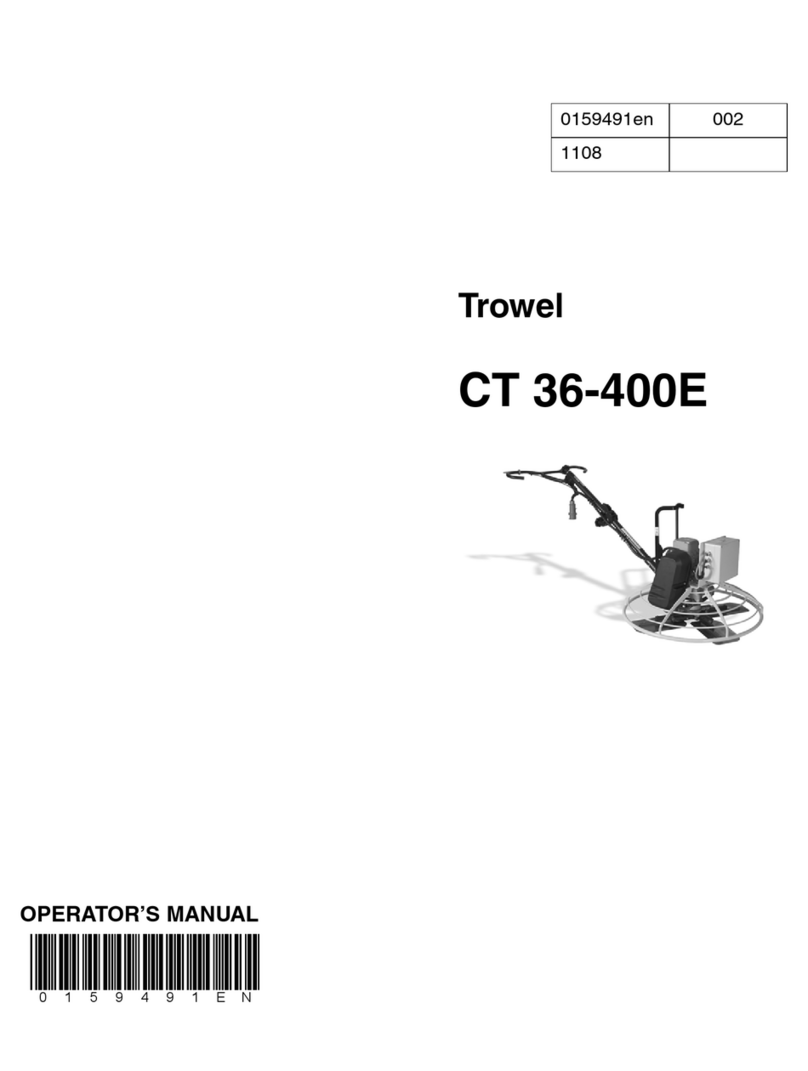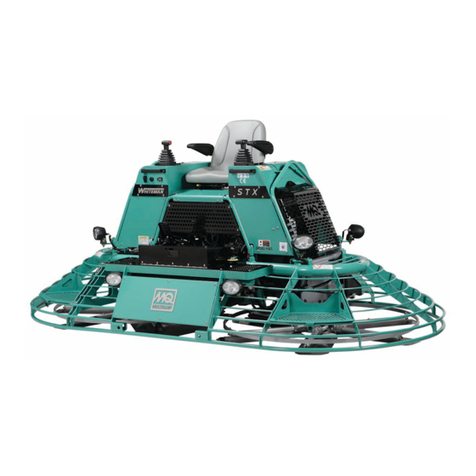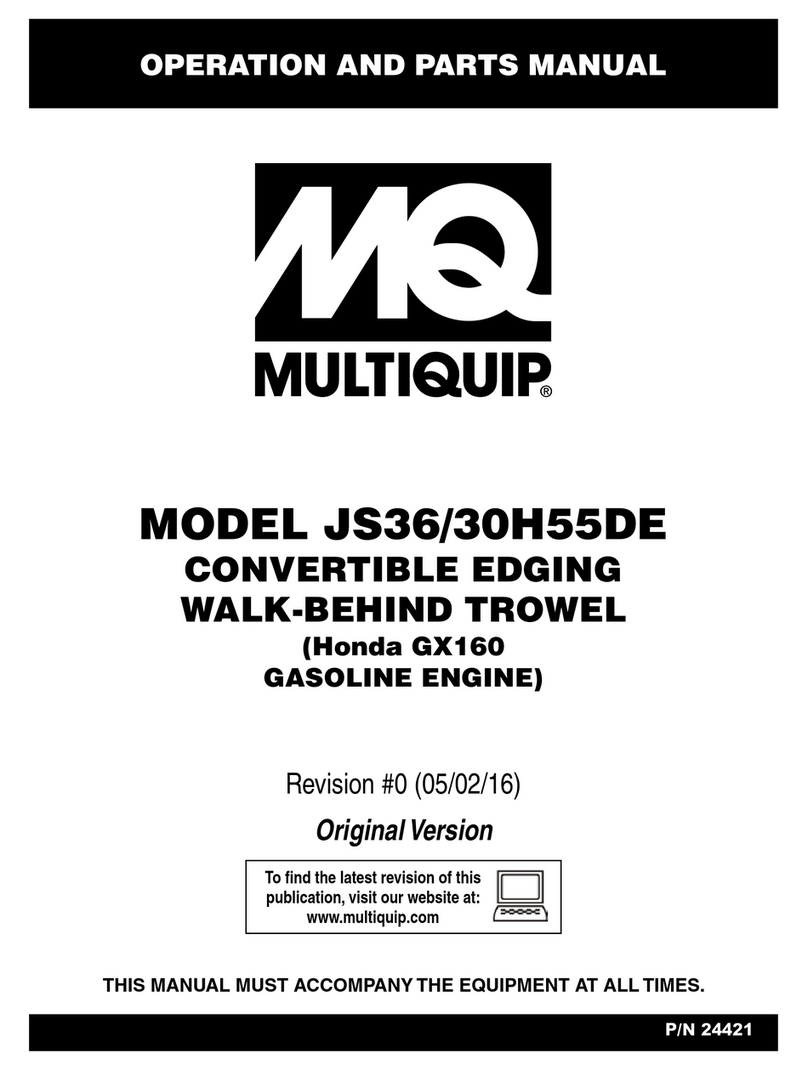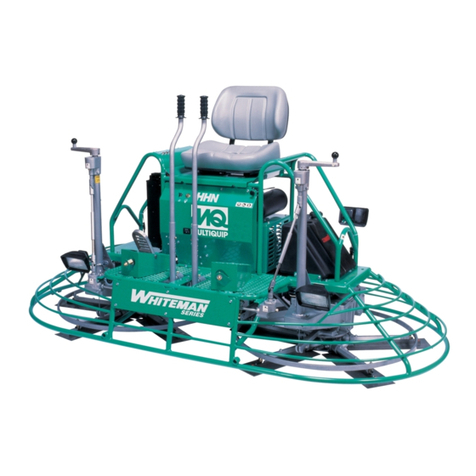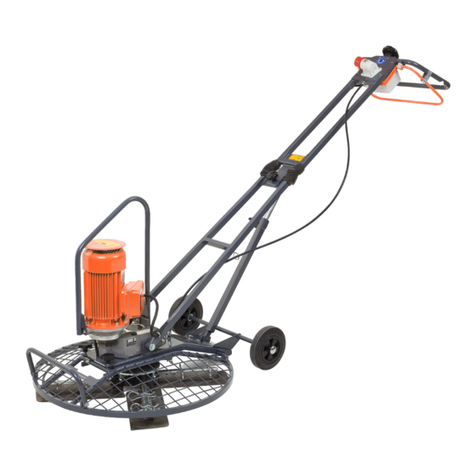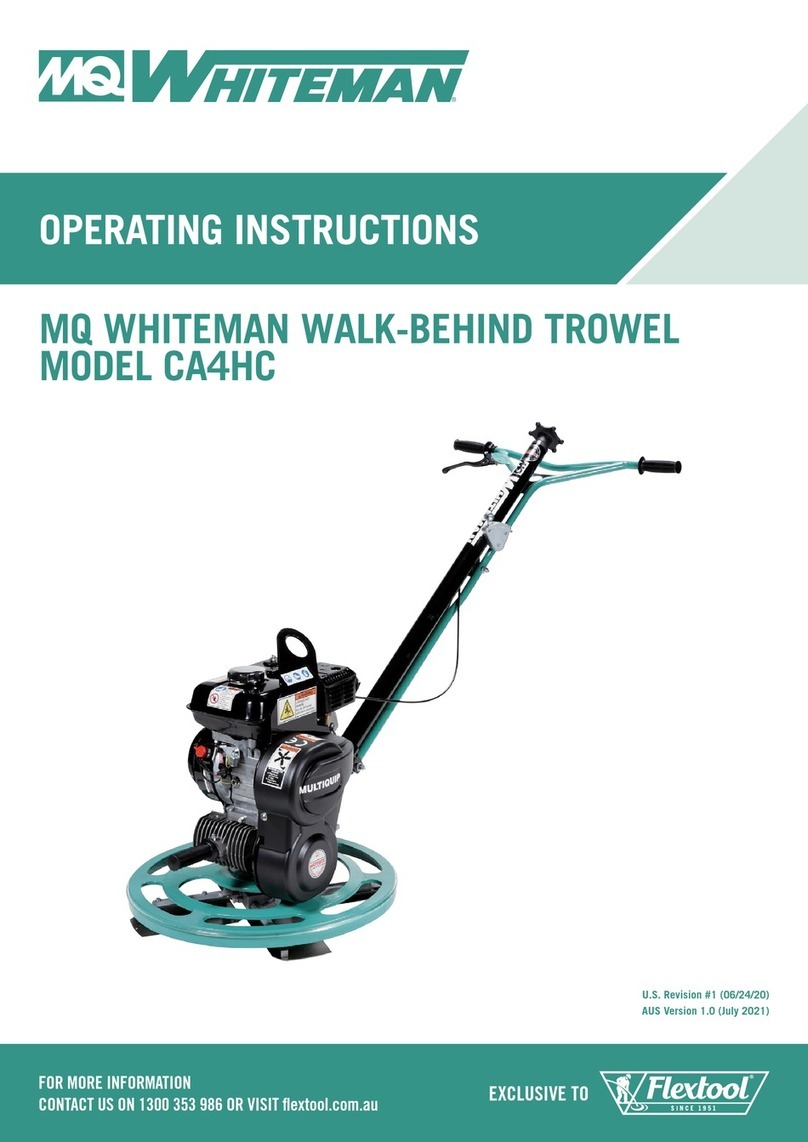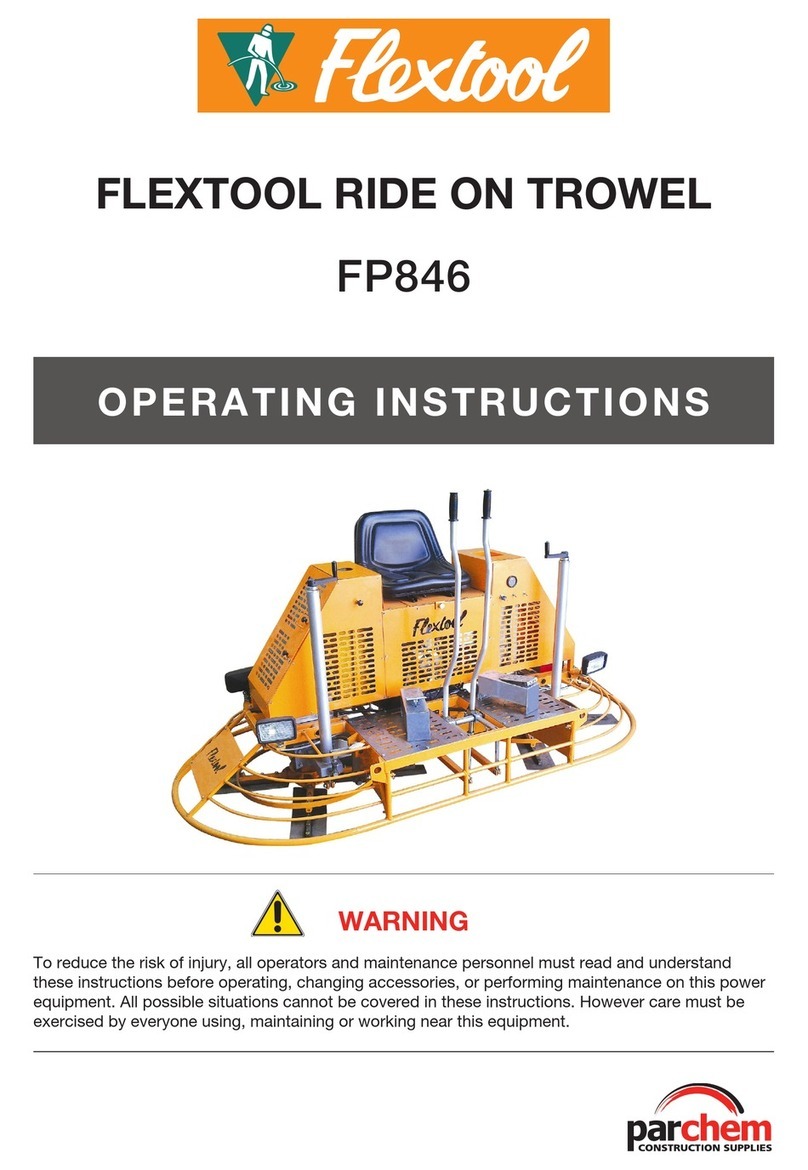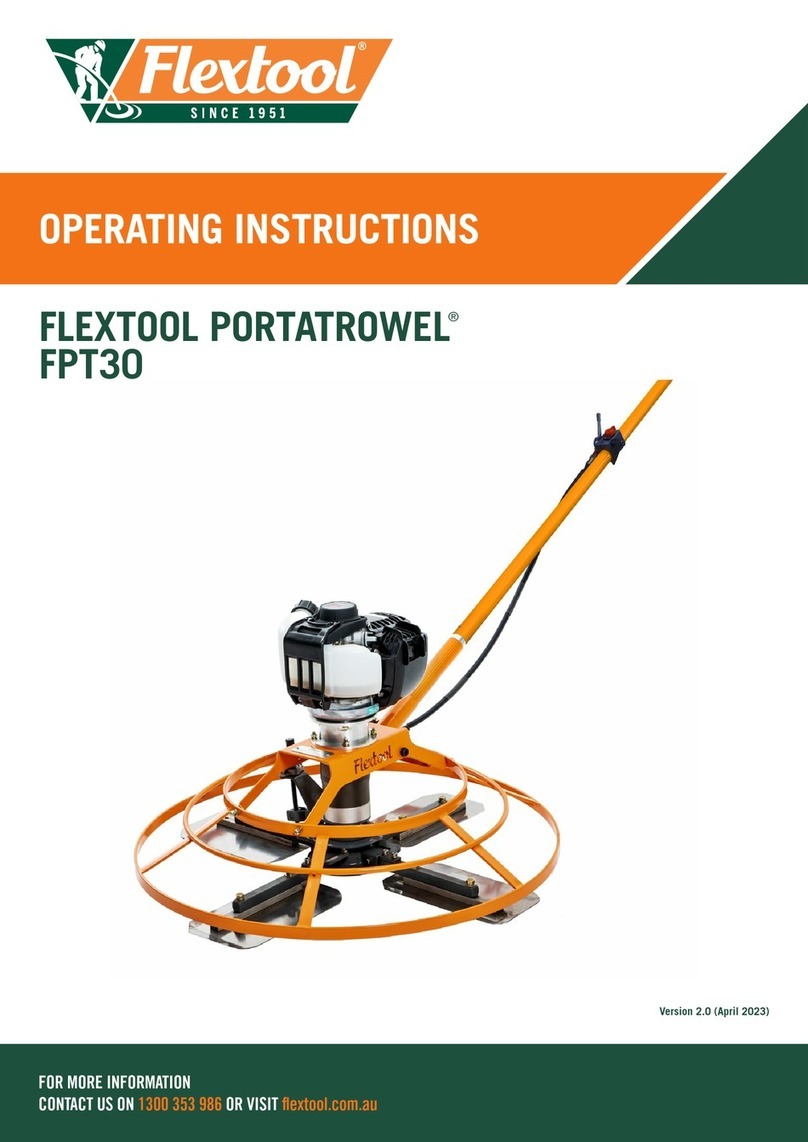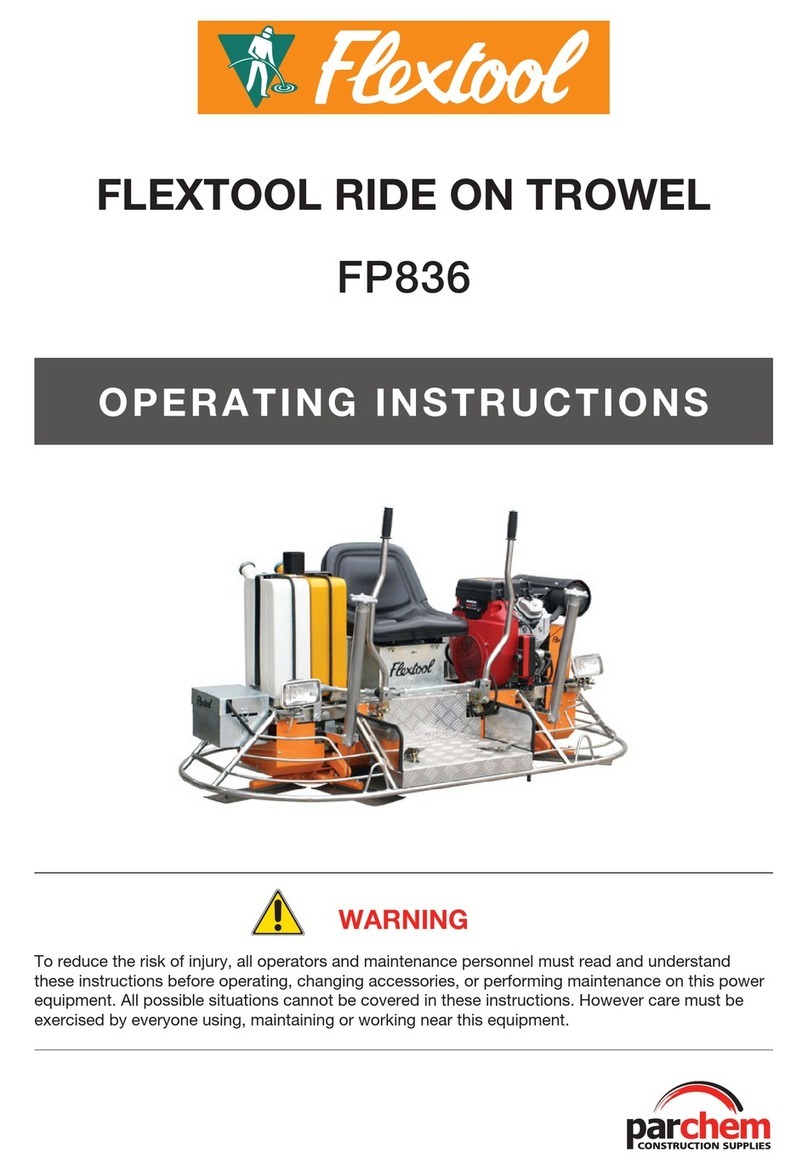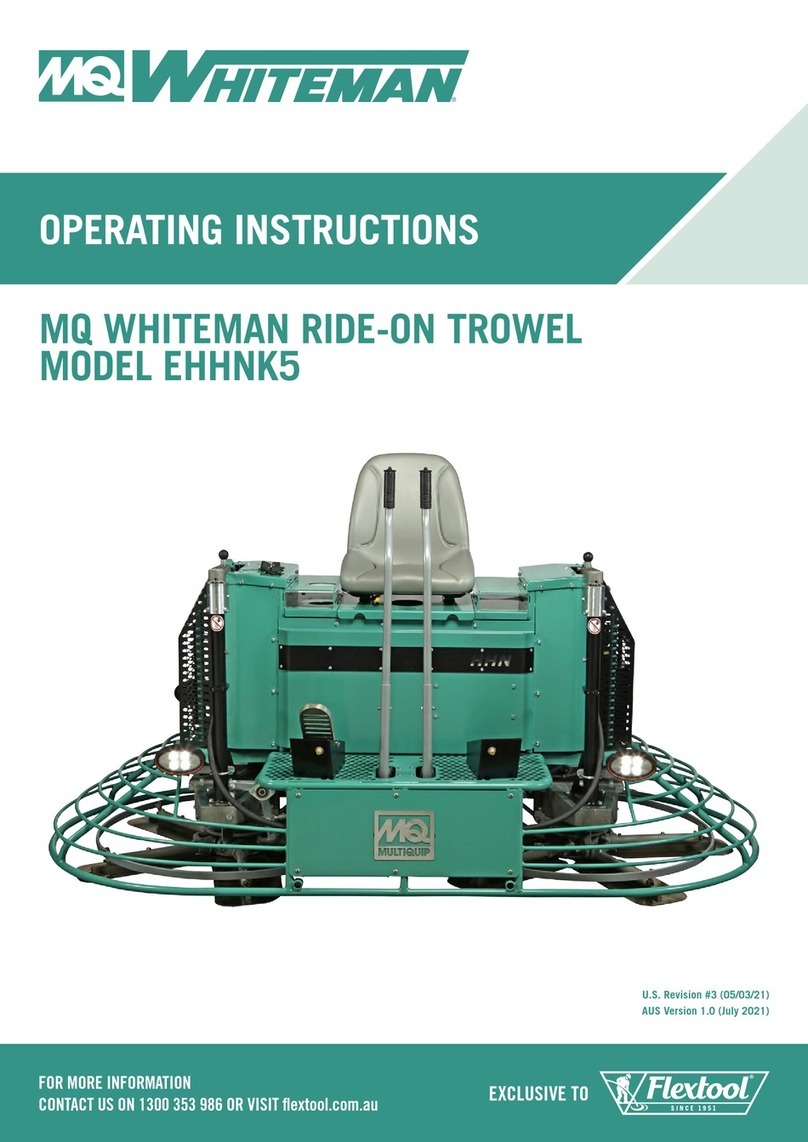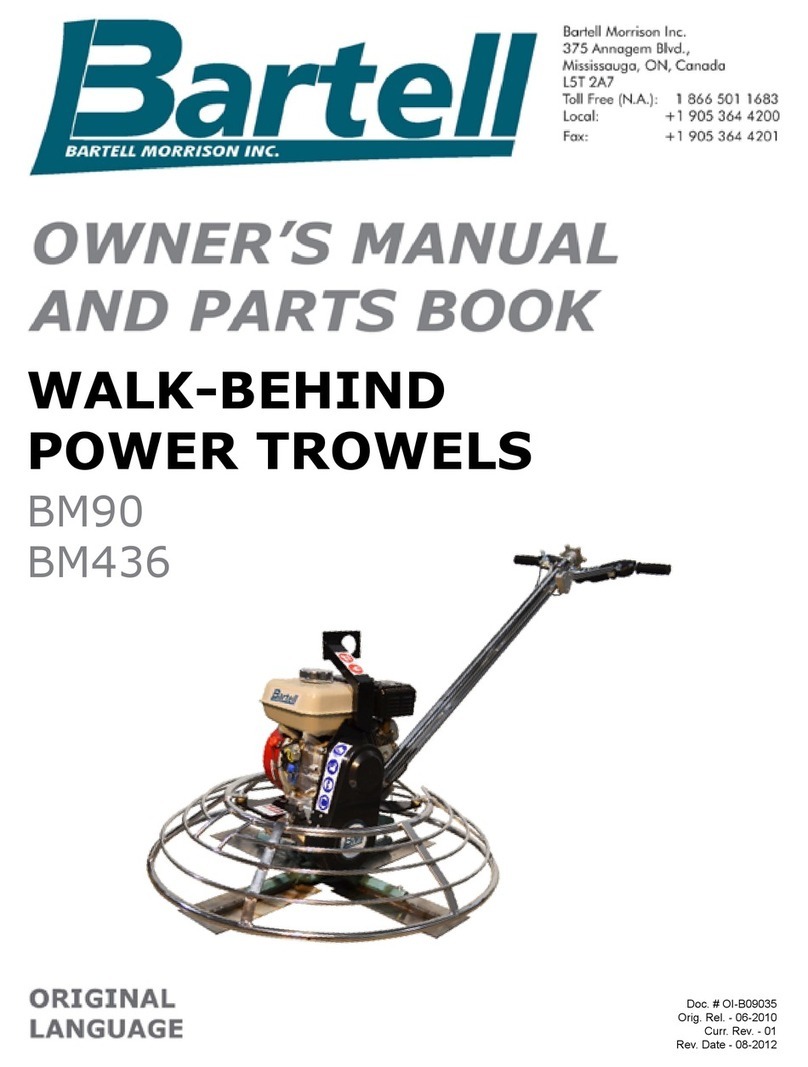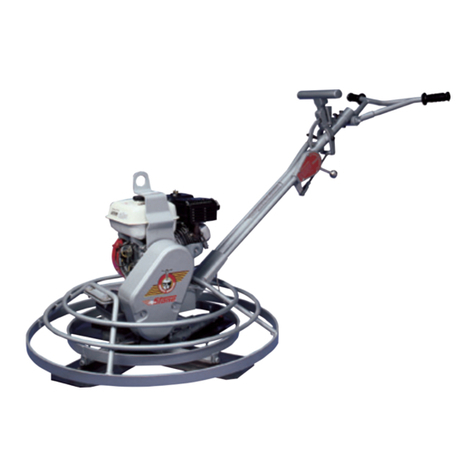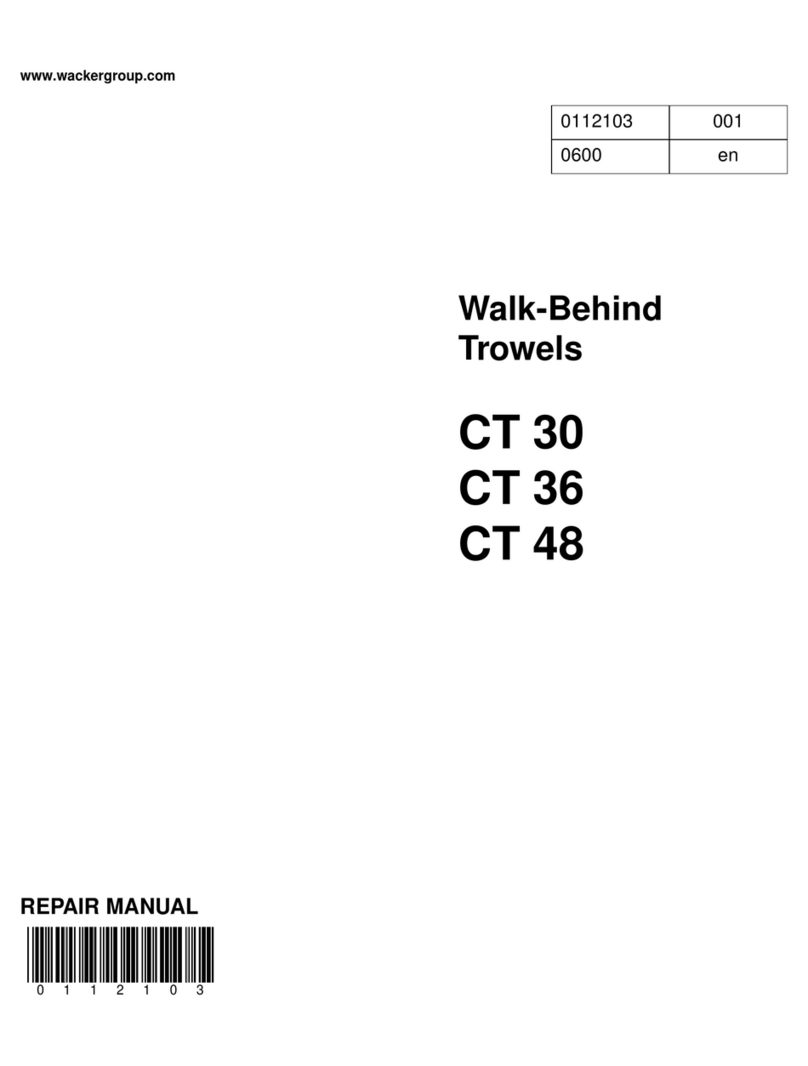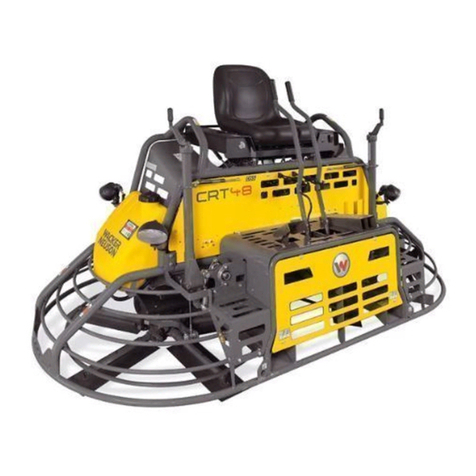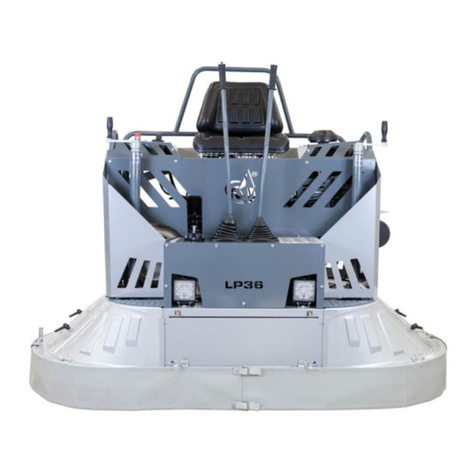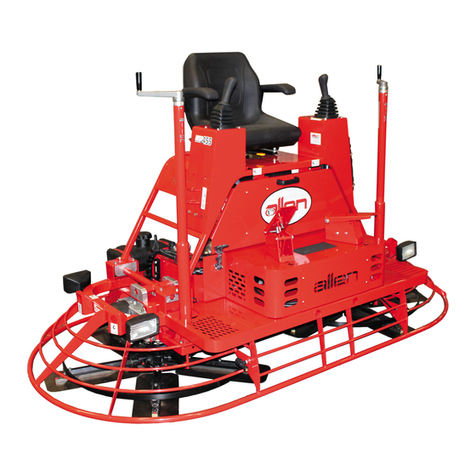
FLEXTOOL OPERATING INSTRUCTIONS PORTATROWEL
4
1300 353 986 flextool.com.au
STARTING THE ENGINE
1. Move the Throttle Control Lever to “MIN” position.
2. Move the Stop Switch to “ON” position.
3. Place the Choke Lever in the “CLOSED” position.
4. When starting cold or after prolonged use without prior
operation press the fuel prime bulb three times.
5. Grasp the start grip and slowly pull the rope towards you.
When hard resistance is felt, pull the starter grip briskly and
smoothly to start the engine.
6. If the engine starts, return the Choke Lever to “OPEN”
position; If the engine is not started, repeat step 5
7. Run the engine for a few minutes to make sure the machine is
in normal working condition.
8. To start trowelling, push the Throttle Control Lever towards
“MAX” position.
MANOEUVRING THE TROWEL
1. To move the trowel back and forth push the handle outwards
and then drag back toward you in the same way you would
operate a bulloat.
2. To move the trowel from left to right, gently twist the handle
from left to right using a slow and gentle motion, the tilt steer
function operates in the same way as a bulloat transferring
weight from the back to the front of the trowel.
PITCHING THE BLADES
1. To pitch the blades upward, turn the Pitch Control Knob
clockwise;
2. To lay the blades at, turn the knob counter-clockwise.
3. The pitch adjustment feature of the PortaTrowel permits quick
and accurate pitch changes of the trowel blades without
needing the change blade types mid job to suit varying
conditions over the slab surface, this allows the operator to do
the work faster and achieve a better slab nish.
FLOATING OPERATION
It is recommended that during oating, blades be kept in a at
position with the trowel working at ½ to ¾ of the full speed, and
each pass should overlap the previous by half the width of the
trowel. A second trowel pass may be required for the desired
nish. Crossover oating is recommended for this pass with blade
pitch at a slightly higher level and trowel at about ¾ of the full
speed. After the oated slab has set suciently it is ready for the
nishing operation.
CAUTION: Do not let the machine stand in one spot on the soft
concrete. Lift the trowel from the slab when the oating operation
is completed.
FINISHING OPERATION
Subject the desired concrete surface nish, the operator should
adjust the blade pitch based on the hardness or plasticity of the
concrete surface. When the concrete is wet or plastic, begin with
the blades lying at or at a small angle on the surface. When the
concrete has suciently hardened, increase the blade pitch and
keep it at a level corresponding to the concrete hardness and the
desired nish. Check the obtained nish and adjust blade pitch
as necessary. As a rule, the greater the blade pitch, the smoother
the nish. However, excessive blade pitch will cause the blades to
wear rapidly.
To ll a hole or cut down a hump, move the unit back and forth
over the hole or hump. More passes may be needed for the
desired surface nish.
CARE AND PREVENTATIVE MAINTENANCE
ENSURE repairs and maintenance of the trowelling machine is
performed by qualied personnel.
CAUTION: Make sure the engine is shut down and cool
enough before performing repairs and maintenance.
For preventive maintenance of the engine, please refer to the
Owner’s Manual of the Honda engine.
The following schedule should be followed when performing
regular maintenance of the trowel:
DAILY (8 – 10 HOURS)
Check the oil level in the engine crankcase before each use, rell
as necessary.
Keep the trowel clean and free of concrete residue after each use.
WEEKLY (50 – 60 HOURS)
Check and clean or replace engine air lter as necessary.
Check blades for their condition and adjust or replace if
necessary.
Relubricate trowel arms, thrust collars and pitch mechanism.
MONTHLY (200 – 300 HOURS)
Remove, clean, reinstall and relubricate the trowel arms and
thrust collars.
Check and adjust the trowel arms for alignment
CLEANING AND STORAGE
Keep the unit free from concrete build up.
